

CHAPLEAUEXPRESS

COVID-19inSudbury&districts:YourweeklyupdateJanuary14,2021
The following is a summary of how the
status of COVID-19 has changed in Public Health Sudbury & Districts’ serviceareaoverthelastsevendaysuptoendof day January 13, 2021: 76 new cases, 32 cases were resolved, 0 deaths occurred. Two (2) outbreaks were active, 1 in a long-term care home and 1 in a retirement home. One (1) of thoseoutbreakswasdeclaredover.Atendofday January 13, 2021, there were 76 active cases in our service area, and 1 active outbreak. Eleven (11)caseswerehospitalized,whiletherestwere self-isolating.
Since the beginning of the COVID-19 pandemic, there have been a total of 380 local casesofwhich304areresolved,andtwopeople havediedinourservicearea.
Trendsinthepastsevendays
Of the 76 new cases in our service area, 36 were associated with an outbreak, while 27 were close contacts of confirmed cases. This means that Public Health identified how these peoplewereexposedtoCOVID-19andwasable to take quick action to prevent further spread.
The source of exposure was unknown for 5 cases, while 3 were travel-related and 4 cases remainunderinvestigation.
Sixty-nine (69) of the cases were from Greater Sudbury, while 5 reside in the ManitoulinDistrict,and2resideintheSudbury District.
By end of day on January 13, contact tracinginformationwasavailableforall76ofthe new cases. Through our investigation, we identified 184 people who had high-risk close contactswiththesecases.Thatisanaverageof3 high-riskclosecontactspercase,comparedto7 contacts per case on average last week. Public Health follows up directly and regularly with everyhigh-riskclosecontacttomonitorthemfor symptoms, ensure they are self-isolating, and makerecommendationsfortestingaccordingto provincialguidance.
The 7-day incidence rate was 38.2 new casesper100000population(comparedto14.6 fortheprevious7days).
The percent positivity was 1.3% for the period of January 5 to January 11 (compared to
IndividualhastestedpositiveforCOVID-19
AlgomaPublicHealth(APH)hasadvised us that an individual associated with R.M. Moore Public School has tested positiveforCOVID-19.






Atthistime,APH has conducted a careful investigation and has identified and notified anyone considered a close contact. Examples ofclosecontactsinclude household members, peoplewhohavebeenin direct physical contact,
0.91%fortheprevious7days).
For the period of January 6 to 12, the effective reproductive number (Rt) was 1.4 for Northern Ontario,and1.1forOntariooverall.
StayCOVID-safe
Stayhomeunlessforessentialneedslike picking up groceries, accessing medical or health care services, or for essential work or school.
Itisimportanttogetoutsideforexercise even during the state of emergency. If you do enjoyanoutdooractivity,remembertokeeptwo metresdistancefrompeopleyoudonotlivewith, and wear a face covering or a mask when you can’t stay distanced. Remember, outdoor gatheringsarerestrictedtoalimitoffivepeople withlimitedexceptions.
Remembertoscreenforsymptomsprior to attending school. Stay home if you have symptomsordon’tfeelwell,wearamaskifyou areusingpublictransit,andmaintainaphysical distanceoftwometresfromothers.Weoweitto ourchildrentokeepschoolssafeandweoweitto Cont’donP.5
atR.M.MoorePublicSchoolintheSault
andpeoplewhohavespentmorethan15minutes together within 2 metres or 6 feet of each other, suchaswhilesharingamealorbeinginthesame carpool. Brief interactions, like walking past someoneinahallwayoronthesidewalk,arenot generally considered close contact situations. APH directly calls all those that are considered highriskandsendsaletterviaemailtoallthose consideredlowrisk. Allcontactsinthisscenario arelowrisk.
Pleasebereassuredthatwearereviewing and confirming enhanced cleaning protocols at the school. We know COVID-19 is present in our community, thus everyone is reminded to

engage in practices to help reduce the potential spreadofCOVID-19,including:
-Screeningchildren/themselves
-Stayinghomewhensick
-Minimizingcontacts
-Cleaninganddisinfectingsurfaces
-Using personal protective equipment when appropriate(masking,eyeprotection)
-Ensuringproperhandhygiene
-Maintainingphysicaldistancing.
We wish the individual a quick and full recovery. Formoreinformation:Pleasevisitthe APH website at http://www.algoma publichealth.com/
Photo Kari Luhtasaari
Howyourtaxescouldbeimpactedbythe COVID-19pandemic

(NC)Thisyear’staxseasonisuniqueandcould also be very confusing, especially with several measuresintroducedbythegovernmenttoassist thosewhohadtostopworkingorhavebeenlaid off.
Though most benefits are taxable, many weren’t taxed at the source (meaning the government didn’t hold back an amount of moneytogotowardsyourtaxes),sothatmoney will be calculated and owed when you do taxes thisyear.Tohelpyouprepareyourtaxes,hereare someinsightsfromLisaGittens,seniortaxexpert fromH&RBlock:
CERB
For those who received the Canada
Emergency Response Benefit, the governmentwillbeissuingataxreportingslip for 2020 outlining the total amount of funds received.Thismustbereportedasincomeon 2020returns,andsincenotaxwasdeductedat thesource,duesmayneedtobepaidonthese amounts.
The amount owed will depend on your 2020marginaltaxrate,takingintoaccountall otherincomeearnedthatyear.Yourmarginal taxrateistheamountoftaxyouwouldpayon anadditionaldollarofincomeandisbasedon the rates of tax applied to a given level of income,bothfederallyandprovincially.
CRSB
If you are self-employed without a paid sick leave program, you may be eligible for the Canada Recovery Sickness Benefit, which provides$500perweek for up to two weeksifyouwereunabletoworkduetoillnessor were required to self-isolate. This benefit is availablefromSeptember27,2020toSeptember 25,2021.Thedeadlineforapplyingforanyoneweek period is 60 days after the end of that period. Tax is withheld at the source for the benefit so any amount received through the CRSBistaxable.
PublicHealthSudbury&Districtsdeclares COVID-19 outbreakinSt.DavidSchoolinGreaterSudbury
PublicHealthSudbury&DistrictshasdeclaredaCOVID-19outbreakinSt. David School (Sudbury Catholic District School Board) in Greater Sudbury after two more individuals tested positive for the virus, bringing the total to three cases associatedwithSt.DavidSchool.
In accordance with provincial guidance, an outbreak in a school setting is declaredwhentwoormorelaboratoryconfirmedcasesofCOVID-19arelinkedand occurwithin14daysofeachother.Parentsandcaregiversarebeingprovidednotice of the outbreak and will receive public health guidance. Public Health is working closelywithSt.DavidSchoolandschoolboardadministratorsatSudburyCatholic DistrictSchoolBoardtomonitortheoutbreak,furtherlimitthespreadofinfection, andensureongoingmeasuresaremaintainedtoprotectstudentsandemployees.
Individualswhoareidentifiedasclosecontactsofacaseinaschoolsetting willbedirectlycontactedbyPublicHealthSudbury&Districts.PublicHealthwill calltheseparentsorguardians,aswellasemployees,toprovidedirection.
Inalettersentfromtheschoolboard,St.DavidSchoolhadalreadymadethe decisiontoshifttoremotelearningeffectiveWednesday,January20,2021.
Parents and guardians of students can visit the Sudbury Catholic District SchoolBoard’swebsiteforinformation:www.sudburycatholicschools.ca
Public Health Sudbury & Districts is reminding everyone to follow public healthmeasurestopreventthespreadofCOVID-19.Continuetoscreenyourselffor symptomsandpractiseCOVID-safebehaviours.
Updates about COVID-19 testing, confirmed cases, and outbreaks in GreaterSudbury,theDistrictofSudbury,andtheDistrictofManitoulinareposted online.
Formoreinformationorifyouhavequestions,pleasevisitphsd.ca/COVID19 or call Public Health Sudbury & Districts at 705.522.9200 (toll-free 1.866.522.9200).
CRCB
Ifyouhavehadtomissworktocarefora family member due to COVID-19, you may be eligible for the Canada Recovery Caregiving Benefit. This benefit is also available from September 27, 2020 to September 25, 2021.As with the CERB and the CRSB, the CRCB is taxable and subject to a 10 per cent withholding tax.
If you are concerned about preparing your own return, an H&R Block tax expert can giveyouaddedconfidenceandpeaceofmind.





Chapleau Moments
by MichaelJ. Morris
Writing in "Snapshots of Chapleau's Past", George Evans, the long time history teacherandassistantprincipalofChapleauHigh School noted that although Chapleau was established in 1885, it took until 1922 to open a highschool.
I came across George's column and decidedtosharepartsofitasitdealswith"inthe beginning"astheschoolnowpreparestomarkits 100thanniversaryin2022.
Sadly George died in a car accident just beforethecelebrationofthe90thanniversaryof CHS.

George wrote that "In the late 19th century,theProvinceofOntariorecognizedthat elementaryeducationwasnecessarybut,afterthe onset of adolescence, formal education wasn’t requiredformostchildren.
"Everyone understood that after mastering the “three Rs” in elementary school, the young male teenager would enter the “real world”andlearnatrade.Thefemaleteenager,of course, would learn her trade, that of homemakerandmother,athome."
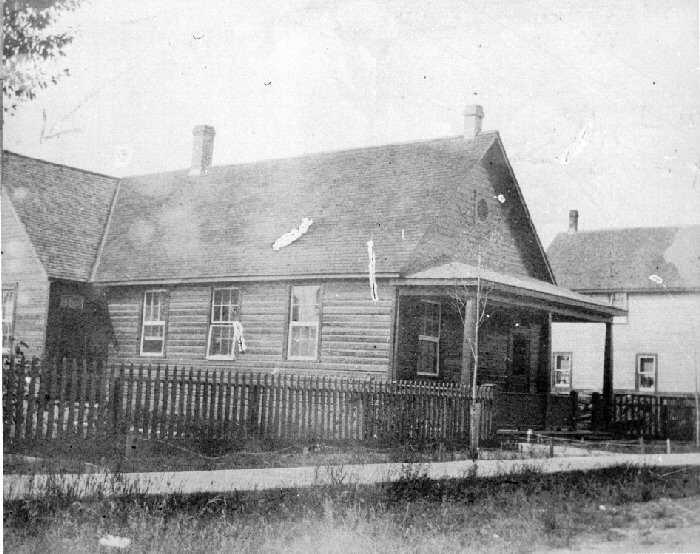
George Evans provided "In the beginning" the establishmentofChapleauHighSchool
Hewrotethatafter1871,some 15 years before Chapleau was established, the law required at least four months of schooling for all childrenbetweentheagesof7and12. (Later, the school-leaving age was raised to 14.) All of this was highly theoretical: in Ontario, in 1900, only 57% of the youngsters who should have been attending school were in factdoingso.
InChapleau,elementaryeducation,in one form, or another, had been available at least since 1886 and a properly constituted public school boardcameintoexistencein1891.
in1922

HenotedthatHigh-schooleducation,on theotherhand,hadtowaituntilthenextcentury. ExactlywhenitstartedinChapleauisdifficultto determine.
He explained that secondary education slipped in through a back door, an institution called a Continuation School. Throughout the province, from 1896 on, cash-strapped rural school boards began to offer the Fifth Book or First Form (i.e. grade 9) as an add-on to their elementaryschoolprogramme.
Other high-school years were added and theContinuationSchoolcameintobeingasaway ofavoidingputtingoutmoneyforanewbuilding tohousearealhighschool.
InChapleau,atsomeundeterminedtime, the four-room public school (opened in 1902) started Chapleau’s Continuation School by offering First Form. By 1914, the Continuation SchoolwasmovedtothenewlycompletedTown Hall and soon Second and Third Forms (grades 10and11)wereaddedtotheprogram.By1915or 1917,theContinuationSchoolhadoutgrownits accommodationoritswelcomeattheTownHall andmovedtotwobackroomsonthesecondfloor of Ecole Sacré Coeur. The addition of Fourth Formmadegrades9,10,11,and12availableto thestudentsofChapleau.
Then Sacré Coeur announced that beginning in September, 1922, it needed those roomsandtheContinuationSchoolfaceditthird eviction.
Meanwhile, province-wide, the attitude toward secondary education was evolving. By the1920s,Ontario’sgovernmentandpeoplehad come to accept secondary education as a desirable part of the formation of a useful, adult citizen. By that time a majority of Ontario’s teenagers were attending high school. In 1921, the Adolescent School Act raised the legal school-leavingage to 16. Chapleaudecidedthat itwastimetohavearealhighschool.OnJune22,
1922, the Municipality passed a by-law making ChapleauaHighSchoolDistrictandChapleau’s ContinuationSchoolpassedintohistory.
As good luck or good planning would haveit,thePublicSchoolwasabouttomoveinto a brand new building (the core of the old ChapleauPublicSchoolonPineStreet)andthat meantthatthenewChapleauHighSchoolcould startintheoldPublicSchoolbuilding,wherethe ContinuationSchoolhadbegun.
Unfortunately,whenthenewschoolyear opened in September, 1922, the new Public School building was not ready to receive students.
From September, 1922, until February, 1923, the old four-room school housed two schools:thepublicschooloperatedfrom8a.m.to 1p.m.andthehighschoolcameinandofferedits programfrom1:15p.m.to6p.m.ThenthePublic SchoolmovedoutandChapleauHighSchoolat lasthadabuildingtoitself.
In 1925, the old wooden, four-room building that Chapleau High School had inherited on Pine Street underwent a major renovation which added four rooms to the originalschoolandencasedtheenlargedbuilding in brick. And this remained the home of secondary education in Chapleau for forty-one moreyears,untilJune,1966.Inthe1970sitwas demolished to make way for Chapleau’s Civic Centre.
George noted that On the first day of schoolinSeptember,1966,studentsandteachers entered the new Chapleau High School overlooking the town from a prominence on the westedgeoftown.Itwasadreamcometrue–the firstbuildinginChapleau’shistorythathadbeen designed and built expressly for secondary education.Thefactthatthecontractor’sworkers werestillinthebuildingdidnotreallymatter.
If you have memories of Chapleau High Schoolthatyouwouldbewillingtoshare,please letmeknow.Myemailismj.morris@live.ca.
Georgeat75th CHS anniversary
Firstschool
ChapleauHighSchool
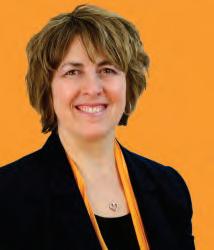
from OTTAWA Rapport
d’Ottawa
by/par Carol Hughes Federal member of Parliament Algoma-Manitoulin-Kapuskasing
People in congregate living settings, such as those in long term care residences have every right to wonder why more wasn’t done to ensure their safety in the aftermath of the first wave of Covid-19. While governments may have lurched from event to event in the pandemic’s early days, thefactthatsolittlewasdonetoshoreuptheability ofhomestokeeptheirresidentssafemayshowthat thegovernmentisn’tinterestedinthebestanswerto theproblem,privatization.
Thewholenotionlikelyrunscountertothe sensibilities of those who believe in the omnipotence of the market and its ability to efficiently address need – which the government hasitsfairshareof. However,beliefswon’tchange the fact that for-profit, long term care residences were ground zero during the first wave of the pandemic. Now,theyarebeingravagedagain,with littlelearnedfromthefirstgo-aroundandlessdone toensurethesafetyofresidents,leavingobservers toquestionwhetherprofitsanddividendsaremore
Changestolongtermcareoverdue
valuedthanindividuals.
Whileit’struetherearewaysthatprovinces can improve how residences operate, the profit model could be the biggest reason most changes wouldneedtobemade.Noclearerexampleofthat is available than the reliance on part time employees that helped carry Covid from one long term residence to the next. That was needed since many of these employees often worked in more than one home to make ends meet. Some jurisdictionshavetriedtoendthepractice,forcing part-timerstochooseoneemployer. Intheendthis punishestheemployeeshowingthatthewell-being of residents and employees are secondary considerations.
Making money should never be more important than the lives and dignity of our loved ones. During the first wave of the pandemic, over 80%of COVID-19deathsinCanadahappenedin long-term care settings and it's only getting worse in the second wave. New Democrats are demandingbetterforourlovedonesbycallingfor an immediate end to profit-driven, long term care homes and bringing Revera, a private, for-profit centre owned by the federal government, into publicownership.
Reveraisclearlytheplacetobegin. Even before the pandemic, the company was facing dozensoflawsuitsrelatedtoneglectcontributingto
death. In the last year, the problems have only mountedalongwiththelawsuits. Anysettlements from the courts would undoubtedly send the company to look for ways to recoup losses and increase profit which will likely cut further into operating costs that ensure the safety of residents andemployees.
As recently as May, the federal Minister responsibleforReverasaidthegovernmentwould bedoingmoretohelpseniorslivingintheirhomes. Overhalfayearlater,itremainstobeseenwhatwas meant by that. The shame is that by refusing to make changes to protect residents in homes the governmentcontrols,itcreatespermissionforother providersinCanadatofollowthatexampleanddo thesame.
Seniorsinthiscountrydeservemuchbetter treatment than what they have received in many long term care homes. It's crucial that the federal government take immediate action to ensure our loved ones are safe and that private, for-profit homes are never again allowed to prioritize their profits over the dignity and well-being of Canadians. We have placed too much faith in market forces and must dial that back under the realizationthatwecanensureneedsaremet,rather thanhopetheyare. Therearemanywaystomake money without compromising the safety of vulnerablepeoplelivinginlongtermcarefacilities.
Danslessoinsdelonguedurée,çaauraitdûchanger
Les résidents d’établissements collectifs, par exemple ceux de soins de longue durée, ont raisons de se demander pourquoi on s’est si peu soucié de leur sécurité à la suite de la première vaguedelaCovid19.Mêmesi,auxpremierstemps de la pandémie, les gouvernements ont peut-être navigué à l’estime, d’un événement à l’autre, le bilan décevant de la protection qu’ils auraient dû assurer aux résidents peut être le signe qu’ils se désintéressentdelameilleureréponseauproblème qu’estlaprivatisation.
Voilàquirisquedefroisserlessensibilités deceuxquicroientenlatoute-puissancedumarché et en sa capacité de répondre efficacement au besoin – à quoi l’État participe pas mal. Mais les croyances ne changeront rien au fait que les établissements privés à but lucratif ont été à l’épicentre de la première vague. Ils sont encore frappésdepleinfouet,ayantpeuretenulesleçons du premier épisode et ayant fait encore moins d’efforts pour assurer la sécurité des résidents. Voilà qui fait s’interroger les observateurs sur les prioritésdecesétablissements:estcelesprofitset lesdividendesoulespersonnes?
Indéniablement,lesprovincesdisposentde moyens pour améliorer le fonctionnement des résidences, mais le modèle de maximisation des bénéficespourraitêtrelaprincipalejustificationde la plupart des changements qui s’imposent.
L’exemple le plus éloquent est la dépendance de ces établissements par rapport aux employés à temps partiel, qui ont contribué à disséminer la Covidd’unétablissementàl’autre,unecatastrophe annoncée,vuquebeaucoupdecesemployés,pour joindre les deux bouts, travaillent souvent dans plus d’un établissement. Des provinces ont bien essayé de mettre fin à cette pratique, en les obligeant à choisir un employeur. Au bout du compte,c’estl’employéqu’onpunit,cequimontre quelemieux-êtredesrésidentsetdesemployésest reléguéausecondplan.
Les profits ne doivent jamais l’emporter sur les vies et la dignité de nos êtres chers. Au Canada, pendant la première vague, les établissements de soins de longue durée ont déploré plus de 80 % des morts emportés par la maladie,etladeuxièmevaguenefaitqu’alourdirle bilan.Lesnéo-démocratesexigentmieuxpournos êtres chers en réclamant la fin immédiate des établissements à but lucratif et l’inclusion de Revera, un de ces centres privés, propriété fédérale,dansleréseaudesétablissementspublics.
Visiblement, il faut commencer par Revera.Mêmeavantlapandémie,cetteentreprise était l’objet de dizaines de poursuites pour négligence ayant contribué à la mort. L’année dernière,lesproblèmessesontseulementaggravés en raison directe des poursuites. Invariablement,
les décisions des tribunaux devaient amener l’entreprise à chercher des moyens d’éponger les pertes et d’accroître ses profits, peut-être en rognantdavantagesurlescoûtsd’exploitationqui assurentlasécuritédesrésidentsetdesemployés. Pasplustardqu’enmai,leministrefédéral chargédeReveraaditquelegouvernementferait davantage pour aider les personnes âgées à vivre chezelles.Plusdesixmoisplustard,ons’interroge encore sur ce qu’il voulait dire. Le scandale c’est qu’en refusant d’apporter les modifications qui protégeraient les résidents des établissements de l’État, on autorise les autres fournisseurs de services àsuivrecemauvaisexemple. Nospersonnesâgéesméritentd’êtremieux traitées que les résidents de beaucoup d’établissements de soins de longue durée. Il est indispensablequelegouvernementfédéralprenne des mesures immédiates pour assurer la sécurité desêtreschersetque,jamaisplus,onn’autoriseles établissements privés à but lucratif à faire passer leurs profits avant la dignité et le mieux-être des Canadiens.Ayanttropfaitconfianceauxforcesdu marché, nous devons faire marche arrière, devant le constat que nous pouvons satisfaire les besoins au lieu d’espérer les satisfaire. Il y a amplement moyendes’enrichirsanscompromettrelasécurité des résidents vulnérables des établissements de soinsdelonguedurée.
COVID-19inSudbury&districts: YourweeklyupdateJanuary
14,2021
Cont’dfromP.1 eachothertopreventfurtherspreadofCOVID-19.
Remind your children and students to follow the added health and safety measures at school. Make sure all students in Grade 1 and up have a mask for school. Some schools have additionalrules.Rememberthatmasksmustbewornoutdoorsif twometresdistancecannotbemaintained.
TheProvinceofOntariohasstarteddistributingCOVID19 vaccines. COVID-19 vaccines are safe and effective. They were approved for use by Health Canada through a rigorous fast track,orrolling,approvalprocess(GovernmentofCanada).Stay up-to-date on the latest COVID-19 vaccine developments by checkingPublicHealth’sCOVID-19vaccinewebpage. What’snew
This week, the Wikwemikong Nursing Home in Wiikwemkoong Unceded Territory received the first delivery of the Moderna COVID-19 vaccine in Public Health Sudbury & Districts’servicearea.PublicHealthworkedwiththecommunity andnursinghometoprovidesupportwithimmunizationsofstaff andresidents.
OnJanuary12,2021,aprovince-widestateofemergency (GovernmentofOntario)wasdeclaredtoprotectOntariansfrom COVID-19. A stay-at-home order was also announced and is currentlyineffectforallOntarians.
Enhanced public health and workplace safety measures (GovernmentofOntario)areineffectaspartoftheProvincewide Shutdown.
This week, students in Northern Ontario returned to inperson learning. Locally, we have seen very few cases among school-aged children and at this time the benefits to in-person learningoutweightherisks.Wearefortunatethatschoolsremain open for in-person learning in Sudbury and districts.As always, through case and contact management, we monitor our local situationandcontexttoinformdecisionsandrecommendations.
We are working closely with our partners in education to ensure the safety of staff and students. It’s important to remember that schoolsettingshavemanyinfectionpreventionprotocolsinplace. Theseincludebutarenotlimitedtosymptomscreening,increased hand hygiene, masking requirements, cohorting, and ongoing COVID-safetyreminders.
TwoBreak-insAtSameAddressInChapleau
OnJanuary8,2021,atapproximately2:30a.m.,members oftheSuperiorEastDetachmentoftheOntarioProvincialPolice (OPP) responded to a break and enter call at a business on Birch Street in Chapleau. Police were called to this same address on January1forasimilaroccurrence.
Thefirstbreak-inisbelievedtohavetakenplacesometime between December 26, 2020 and January 1, 2021. A number of tools including drill bits and socket sets were taken as well as a green coloured 8" Woods power ice auger. The total value of the stolen items was approximately$2000. It is unknown if anything wasstolenduringthesecondincident.
If you were in the area during this time, or have any informationregardingtheseincidents,pleasecontacttheOPPat1888-310-1122. Should you wish to remain anonymous, you may contact Crime Stoppers at 1-800-222-TIPS (8477) or visit www.p3tips.com.You may be eligible for a cash reward of up to $2000ifanarrestismade.
TimeToLearnGrow&Playat AlgomaDistrictSchoolBoard!
This year, as we strive to keep students, staff and parents safe and healthy, Algoma District School Board has moved their Kindergarten Registration online. Parents/guardians are able to complete the Kindergarten registration form at www.adsb.on.ca anytimeduringtheweekofJanuary11th.Oncecomplete,Chapleau Elementary School will reach out to finalize details and your child will receive a KindergartenWelcomePackage! Childrenbornin2017mayberegisteredforJKand thosebornin2016forSK. Ifyouareunabletocompleteanonlineregistration,please contact Chapleau Elementary School at 705-864-1170. Register your child for Kindergartenfromthecomfortofyour homeandatatimethatisconvenientforyou! That’s ADSB’s online Kindergarten registration, January 11th through 15th at www.adsb.on.ca.
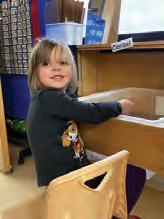



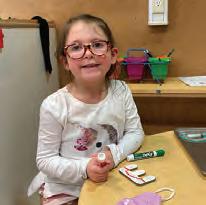

UCFO
Adieu à l'année 2020 et bienvenue à 2021
Les membres de l'UCFO de Chapleau désirent vous souhaiter une bonne et heureuse année! Que la santé et le bonheur soient au rendez-vous au sein de votre foyer pour l'année 2021. Comme tous, nous souhaitons que ce NouvelAn nous apporte un retour à la normale tout en gardant nos bonnes habitudes et nos priorités dont nous ont apprises durant cette pandémie. Nous tenons aussi vous remercier pour votre appui lors nos levées de fonds durant l'année dernière ainsi que les achats dans notre boutique surtout au mois de décembre. Ça va sans le dire que nous avons eu besoin de modifier les façons de faire avec la pandémie, toutefois, nous avons réussi, avec votre aide, à faire rejoindre les deux bouts. Sans votre appui, nous ne pourrions pas nous permettre un si
Centre culturel Louis-Hémon
beau local pour faire ce que l'on aime et vendre des articles faits à la main par des membres de Chapleau. MERCI!!!
Dans les prochains mois, nous aurons des billets à vendre pour notre tirage annuel d'un panier d'artisanats. Il est dans les couleurs noir, gris et blanc.
Les tirages pour le calendrier UCFO 2021 vont commencer plus tard ce mois-ci. Vérifiez notre page Facebook pour plus d'informations ou allez visiter le lien suivant de temps à autre: https://francoontariennes.ca/informations/#tabcollectes-de-fonds
Enfin, ce message était en ligne durant les fêtes et je voulais le partager : « Une nouvelle année est un livre vierge de 365 pages... faites de chaque jour un chefd'œuvre avec toutes les couleurs de la vie et pendant que vous l'écrivez, souriez! ».

à venir!




Détails
OntarioAchievesKeyMilestonewithVaccinationsinLong-TermCare ResidentsandWorkersinSevenRegionsImmunizedAheadofSchedule
Ontario has reached a key milestone in thefightagainstCOVID-19,completingthefirst round of vaccinations ahead of schedule in all long-termcarehomesinToronto,Peel,Yorkand Windsor-Essex,thefourregionswiththehighest COVID-19transmissionrates.Thefirstroundof vaccinations has also been administered at all long-term care homes in the Ottawa Public Health Region, Durham Region and Simcoe MuskokaDistrictHealthUnit.
"This is the first of many victories to comeagainstthisdeadlyandruthlessenemywe face," said Premier Doug Ford. "We are making steady progress, but we will not rest until the residentsandstaffofeverylong-termcarehome andallOntarianshavehadtheopportunitytoget a vaccine. Only then will we be able to get our livesbackandreturntonormal."
Todate,morethan40percentofalllong-
termcarehomesacrosstheprovincehavehadan opportunitytoreceivethefirstdoseofaCOVID19vaccine,andmorethan83,000long-termcare residents,staffandessentialcaregivershavebeen vaccinated.
"Meeting this milestone is an important step towards keeping our most vulnerable and thosewhocareforthemsafe,"saidDr.Merrilee Fullerton, Minister of Long-Term Care. "While wecontinuetovaccinateourlovedones,wemust rememberthatourlong-termcarehomesarestill atriskfromcommunityspread.It'simportantthat all of us continue to stay home as much as possibleandfollowthepublichealthmeasuresso wecanstaysafeandsavelives."
Progress continues to be made with the goal of administering vaccines in all long-term care homes across the province by February 15, 2021.
"To have the first round of vaccinations completedatlong-termcarehomesinthesehardhit regions is a significant achievement, and I'd liketorecognizeallthosewhocontributedtothis effort," said Christine Elliott, Deputy Premier and Minister of Health. "Together with our partnerswecontinuetoexpandourcapacityand wearereadytoadministermoredosesassoonas wereceivethem."
As part of Phase One of its vaccine implementation plan, Ontario will continue to focusonvaccinatingvulnerablepopulations,and thosewhocareforthem,asmoresupplybecomes available. On January 15, the province was alerted by the federal government that due to work to expand its European manufacturing facility, production of the Pfizer-BioNtech COVID-19vaccinewillbeimpactedand Cont’donP.9


OntarioAchievesKeyMilestonewithVaccinationsinLong-TermCare ResidentsandWorkersinSevenRegionsImmunizedAheadofSchedule
Cont’dfromP.7
Canada's allocations of the Pfizer-BioNTech COVID-19 vaccine for the remainder of January andearlyFebruarywillbereduced.

To respond to this change in supply of the Pfizer-BioNtech vaccine, Ontario's Chief Medical OfficerofHealthhasprovidedupdateddirectionon theadministrationofseconddoses:
Long-term care and high-risk retirement homeresidentsandtheiressentialcaregivers,who have received their first dose of the PfizerBioNtechvaccine,willreceivetheirseconddosein 21to27days.
Staffwhowerevaccinatedwithinthehomesatthe sametimeastheresidentswillalsofollowthesame schedule.
AllotherrecipientsofthePfizer-BioNtechvaccine must receive their second dose after 21 days and before42days.
ForindividualswhoreceivedtheModernavaccine, thedosescheduleof28dayswillremain.
"The remarkable first stages of Ontario's COVID-19vaccinerolloutdemonstratehowmuch we can accomplish when Ontarians work together toprotectourmostvulnerablecitizensandfrontline essential workers," said Solicitor General Sylvia Jones. "Wewillbuildonthesepromisingfirststeps as we continue our distribution of both first and seconddosesofvaccines. Thoughthereismuchto be hopeful for, we urge everyone to continue to followpublichealthguidelinesandstayhome,stay safeandsavelives."

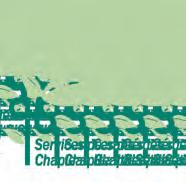

“We've been laser-focused on meeting the Premier's challenge to complete first dose vaccinations to our most vulnerable in the four key areas by January 21," said General Rick Hillier (retired). "I want to commend the tremendous effort of everyone involved in achievingthismilestoneaheadof schedule because this is their success."
Since the start of the COVID-19 pandemic, Ontario has invested $1.38 billion to ensurethatlong-termcarehomes have the resources they need to battlethisvirus.Thegovernment has also taken action to address urgent staffing shortages, including issuing management orders, enabling the deployment ofhospitalstafftolong-termcare homes and the use of infection preventionandcontrolteams.
The province’s vaccine strategy prioritizes the most vulnerable populations first, including residents of long-term carehomesandretirementhomes in regions with high COVID-19 transmission rates, who are at
higherriskofcontractingthevirus.
As of January 19 at 12:00 p.m., over 226,000 doses have been administered across the province.
As the rollout of COVID-19 vaccines continues, the Ontario government is investing an additional$398millionduringthesecondwaveof thepandemictoreducetheriskofthevirusentering long-termcarehomesfromthecommunity.
During the second wave, Ontario has enhanced testing requirements for long-term care home staff and essential caregivers, recognizing how important it is to identify a case of the virus before it can spread from the community into a long-termcarehome.
To address long-standing staffing challenges,thegovernmenthaslaunchedoneofthe largest recruitment and training drives in the province’shistorytodeliveronitscommitmentto provideanaverageoffourhoursofdailydirectcare forresidents.
NDPcallsforactionto makeschoolssafetoreopen
Thousandsoffamiliesandeducatorsare slated to learn today when or if schools will reopen — yet before making this decision, the governmenthasn’ttakenasingleactiontomake schools safer, said NDP Education critic Marit Stiles.
“It’s not enough to just reopen schools. We can’t repeat the mistakes of the last few months. Don’t just reopen schools, make them safe to open,” said Stiles. “If the NDP were in government today, we’d put a big and broad inschool COVID-19 testing program in place before students and staff return. We’d cap class sizes at 15. We’d be working in schools now to improveventilation.Andwe’dgiveparentspaid family-care days to stay home with kids that are sick, so they don’t unintentionally send a child withthevirustoschoolbecausetheycan’tafford tostayhomewiththem.”
Stiles added that more supports for athome learning need to be put in place for educators and families that continue to do that, from tech support to paid leave for parents who have to miss shifts to support little ones with onlineclasses.
Schools in the North and special needs classesacrosstheprovincealreadyreturnedtoinclasslearningwithoutadditionalprotections,and morecasesofthevirushavebeenfoundinthose classrooms. The most impacted regions, including Toronto, Peel, York, and WindsorEssex,areslatedtoreturntoschoolFeb.11,and alsoneedadditionalsafetymeasures.



Lastweekssolutions

MOMENTS IN TIME
OnFeb.6,1891,threemembersoftheDaltonGangstage an unsuccessful train robbery in California -- an inauspicious beginning to their careers as serious criminals.Ayearlater,thegangbotchedanotherrobbery, boldly attempting to hit two Kansas banks at the same time.
24AberdeenSt.S. P.O.Box214
Chapleau, ON P0M1K0
Download ourAPP
Rita T. McKee-Gavan Broker of Record
www.rtmckeerealty.com
Email: rita@rtmckeerealty.com

NorthernLightsFordSales
Andrew G. McKenzie
Travis Gendron

ALLEMANO, FITZGERALD PASCUZZI & BERLINGIERI
Barristers and Solicitors
MICHAEL C. ALLEMANO, B.A., L.L.B.
Certified by the Law Society as a Specialist in Real Estate Law
P.O. Box 10, 369 Queen St. E. Suite 103
Sault Ste. Marie, Ontario P6A 1Z4
Phone (705) 942-0142 Fax (705) 942-7188

Highway 17 North P.O. Box 1033
Wawa, ON. P0S 1K0
Business 705-856-2775
Fax 705-856-4862
tgendron@northernlightsford.ca sales@northernlightsford.ca

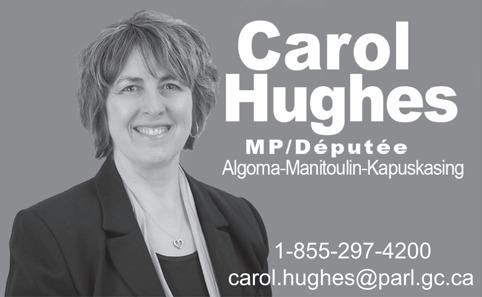
to Friday: 1
to 10,000
to Friday
P.O. Box 1700, 37 Broadway Avenue, Wawa, Ontario P0S 1K0
Phone (705) 856-4970 Fax (705) 856-2713
New/Free digital e-resources have been added to the Library's Website for your reading enjoyment while the Library is closed.
LocalMARKETPLACE MARKETPLACE
7pm.NarcoticsAnonymous(N.A)everyTuesdaysameplacesametime. NNADAPWorker@864-0174info.
CHADWIC HOME, FAMILY RESOURCE CENTRE. Offers shelter, emotionalsupport,andinformationforwomenandtheirchildrenwhoarein crisissituations.WehaveaTollFreeCrisisLinewhichisstaffed24hoursa day.WecanarrangeforfreetransportationtotheCentreforwomenwho liveintheAlgoma/Chapleauarea.Wealsooffersupporttowomenwholive in the communities of Chapleau, White River, Dubreuilville, and HornepaynethroughourOutreachProgram.OurOutreachWorkertravels tothosecommunitiestomeetwithwomenwhoneedemotionalsupportas wellasinformationabouttheirrightsandoptions.Ifyouneedtospeakwith the Outreach Worker when she is



3surprisingthingsyoushouldknowaboutdementia

(NC) While many of us may know a friend or family member with dementia, there are many aspects of this condition that are often easily misunderstood. To better understand dementia, herearethreeimportantthingstoknow:
1.It’snotaninevitablepartofaging
Somemightmistakenlybelievedementia is an inevitable part of aging. While some risk
factors linked to developing dementia cannot be modified, like genetics, what you may not know is that you can work on others such as mid-life obesity, smokingandhighcholesterol.
Several studies suggest that preventing or delaying the onsetofsymptomsispossibleby adopting healthy lifestyle behaviours such as being physically active, eating a healthy, well-balanced diet, avoidingsmokingandexcessive alcohol consumption, reducing stress, and staying connected to others.
Stayinghealthyisgoodforyourmindand bodynow,anditcanmakeadifferenceforyour brainhealthinthelongterm.
2.Therearemanytypesofdementia
Most people have heard of Alzheimer’s disease,buttheymaynotrealizethereareseveral other types of dementia such as dementia with Lewy bodies, frontotemporal dementia and
vascular dementia (often linked with stroke). Dementia is also linked to traumatic brain injuries like concussions. Dementia is most commonlydiagnosedamongthoseaged65years or older. However, individuals can also be diagnosedbeforetheageof65withyoung-onset dementia, which presents unique challenges, such as finding supports adapted for younger peoplelivingwithdementia.
3. Not everyone’s experience of living with dementiaisthesame
Two people with the same type of dementiamayexperiencedifferentsymptomsin various degrees. For example, one person may have challenges with daily tasks while others might lose a second language or experience a personalitychange.
Most importantly, remember that many people living with dementia, can still function and take care of themselves. While some may needmoreassistanceatlaterstages,theystillfeel emotionsandrespondtothem.
Find more information at canada.ca/dementia.
Votremodedevieaugmente-t-ilvotrerisquededévelopperladémence?
(EN) Nous sommes nombreux à avoir entendu parler de la démence. C’est un ensemble de symptômes qui peuvent affecter le langage, l’humeur et le comportement. La démence peut aussi se manifester par un déclin des capacités
cognitives, comme la mémoire, la planification, le discernement et la conscience du lieu et du temps.
Toutefois, beaucoup ignorent qu’il suffit demodifiercertainsaspectsdenotremodedevie pouraideràréduirenotrerisquededévelopperla démence.
Bien qu’il n’existe actuellement pas de remède à la démence et que certains facteurs de risque,commelagénétique,nepeuventpasêtre modifiés, vous pouvez contribuer à réduire le risque de développer la démence en posant certainsgestestoutaulongdevotrevie.Plusieurs études donnent à entendre que l’adoption de saineshabitudesdeviepeutcontribueràretarder le début des symptômes ou à diminuer le risque dedévelopperladémence.
Adopter de saines habitudes de vie comme être actif, opter pour un régime sain et bienéquilibré,éviterletabacetlaconsommation excessived’alcool,réduirelestressetmaintenir unréseausocialpeuventfaireunedifférence.
Non seulement ces habitudes peuvent contribuer à réduire le risque de démence, elles peuvent aussi aider à diminuer les chances de développerd’autresproblèmesdesantéliésàun risque élevé de démence, comme le diabète, l’obésitéenmilieudevieetl’hypertension.
Selon un rapport de la Commission Lancet produit en août 2020, le risque de développer la démence est de 60 pour 100 plus élevé chez les personnes obèses ou faisant de l’hypertension en milieu de vie que chez les
autres.
Commeledémontrecesétudes,resteren santé n’est pas seulement bon pour votre corps c’est aussi bon pour votre esprit. De simples changements effectués aujourd’hui peuvent améliorervotreviepourlesannéesàvenir. Vous trouverez davantage de renseignementsàcanada.ca/démence.
